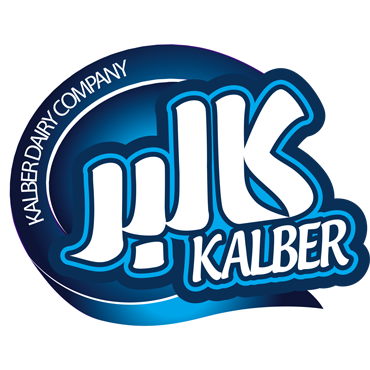Why Milk Spoils: A Comprehensive Guide to Microbial Contamination and Control for Consumers and Dairy Professionals
This article explores the causes and types of microbial spoilage in milk, offering practical prevention and control strategies tailored for both consumers and dairy professionals to ensure milk safety and freshness.
Milk is one of the most widely consumed and nutritionally rich beverages around the world. However, its high moisture content, neutral pH, and nutrient profile make it an ideal environment for microbial growth. Understanding why milk spoils, which microbes are involved, and how to prevent contamination is essential for both consumers and dairy professionals. This guide delves into the science of microbial spoilage and provides actionable strategies to keep milk safe and fresh.
What Is Microbial Spoilage?
Microbial spoilage refers to the deterioration of milk due to the growth of unwanted microorganisms. This process leads to changes in taste, texture, odor, and safety. Unlike chemical spoilage, which involves oxidation or enzymatic reactions, microbial spoilage is caused by bacteria, yeasts, and molds breaking down milk's proteins and fats, resulting in undesirable byproducts.
Spoiled milk may develop a sour smell, curdling, bitter flavors, or a slimy texture. In some cases, harmful microbes can produce toxins, posing serious health risks if consumed.
Key Microorganisms Responsible for Milk Spoilage
1. Psychrotrophic Bacteria
These bacteria thrive at refrigeration temperatures and are the primary culprits in milk spoilage. Notable species include Pseudomonas, Listeria monocytogenes, and Yersinia enterocolitica. They produce heat-resistant enzymes like lipases and proteases that continue to spoil milk even after pasteurization.
2. Spore-Forming Bacteria
Bacillus and Clostridium species form spores that can survive pasteurization. Under favorable conditions, these spores germinate and cause spoilage in stored milk.
3. Lactic Acid Bacteria
These bacteria, such as Lactobacillus and Streptococcus, ferment lactose into lactic acid. While some are used in dairy fermentation, uncontrolled growth leads to souring and curdling.
Where Contamination Happens
Contamination can occur at multiple points:
-
On the farm: Dirty milking equipment, infected udders, and improper handling introduce bacteria.
-
During processing: Inadequate pasteurization or unclean machinery can allow microbes to survive or be reintroduced.
-
Storage and transport: Temperature fluctuations or improper refrigeration create ideal conditions for bacterial growth.
How Microbial Spoilage Happens
Spoilage is typically triggered by enzymatic reactions caused by microbial activity:
-
Lipases break down milk fats, producing rancid flavors.
-
Proteases degrade casein and whey proteins, causing bitterness and coagulation.
-
Acid production by lactic acid bacteria reduces pH, leading to curdling.
-
Gas production may cause bloating in containers.
These reactions become noticeable when the bacterial load surpasses 10⁶ CFU/mL.
Factors That Speed Up Spoilage
-
Temperature abuse: Psychrotrophic bacteria can double in number within hours at slightly elevated temperatures.
-
Time: Even with refrigeration, spoilage begins within days if bacterial contamination is high.
-
Poor hygiene: Unclean handling or equipment can increase initial microbial load dramatically.
How to Detect Spoiled Milk
-
Sensory signs: Sour smell, curdling, change in color or consistency.
-
Rapid tests (for industry): CO₂ detection, microbial sensors, ATP bioluminescence.
-
Lab tests: Total plate counts, spore counts, identification of specific pathogens.
Prevention and Control Strategies
For Dairy Professionals:
-
Good Hygiene Practices (GHP): Regular cleaning and sanitization of all equipment.
-
Pasteurization Optimization: Ensuring correct time-temperature combinations.
-
Cold Chain Integrity: Rapid cooling to below 4°C immediately after milking and consistent refrigeration during transport.
-
Regular Monitoring: Microbial testing at various stages.
For Consumers:
-
Check Expiry Dates: Always choose the freshest batch.
-
Store Correctly: Keep milk below 4°C and avoid leaving it out after opening.
-
Use Clean Containers: Never pour used milk back into the original container.
-
Trust Your Senses: Discard milk that smells or looks off.
Microbial Control and Quality Practices at Kalber Dairy
At Kalber Dairy, we pride ourselves on setting industry-leading standards in microbial control and quality assurance throughout every stage of production. From the very first step, we ensure that only the highest-quality raw milk—thoroughly tested and inspected—enters our processing lines.
In our state-of-the-art facilities, we operate under strict hygiene protocols aligned with HACCP, GMP, and ISO 9001 certifications. We perform continuous microbial testing and enforce a first-in, first-out inventory system to maintain freshness and safety.
Our commitment to quality extends to our packaging, where we utilize aseptic UHT technology to sterilize milk at 135–150 °C for a few seconds before sealing it in a sterile environment. This process eliminates all spoilage organisms while preserving the milk’s nutritional value for up to six months.
Through continuous innovation, meticulous monitoring, and adherence to global safety standards, we consistently deliver UHT milk that is not only fresh and flavorful but also microbiologically safe for every consumer.
Conclusion
Milk spoilage is primarily driven by microbial contamination, with psychrotrophic bacteria playing a dominant role. Recognizing the signs, understanding the spoilage process, and implementing best practices can significantly extend milk’s shelf life and safety. Both consumers and dairy professionals play a vital role in controlling spoilage—from farm to fridge. By following these guidelines, we can all enjoy fresher, safer milk every day.




.jpg)
